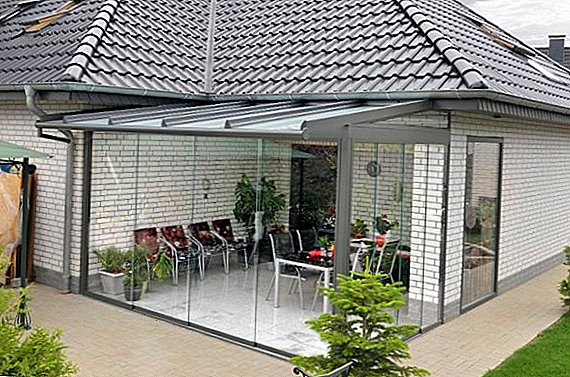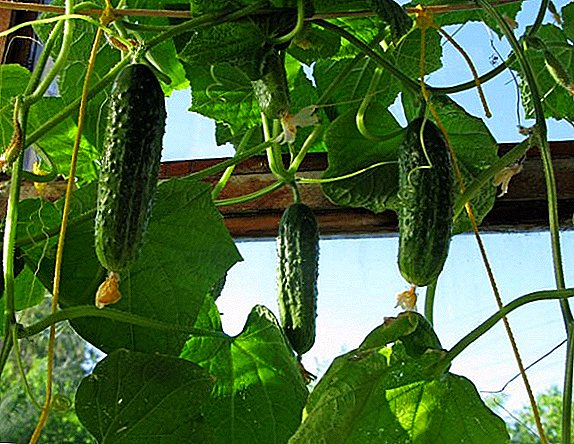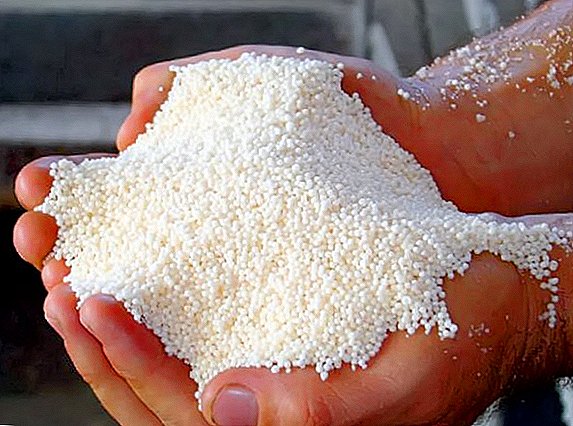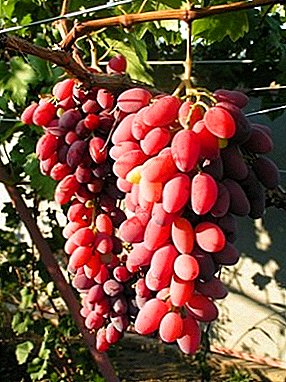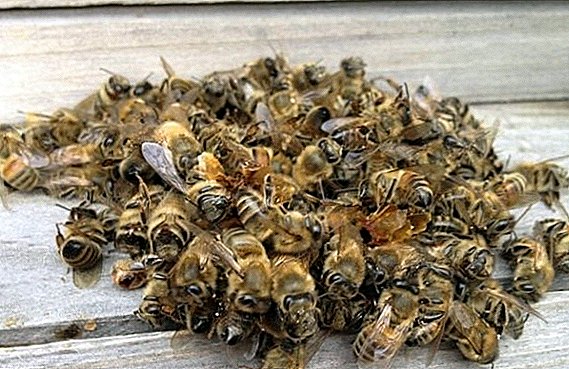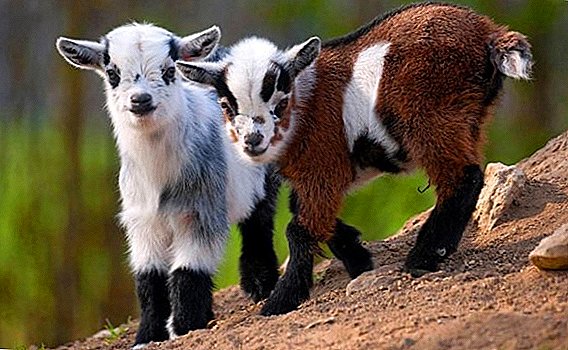 Dwarf animals are not only the inhabitants of zoos. Farmers have long and successfully bred such breeds of animals for various purposes: as pets, for agricultural tourism, etc. In this review, we will focus on the Cameroonian dwarf goats and their characteristics.
Dwarf animals are not only the inhabitants of zoos. Farmers have long and successfully bred such breeds of animals for various purposes: as pets, for agricultural tourism, etc. In this review, we will focus on the Cameroonian dwarf goats and their characteristics.
Total information
Compact Cameroon goats have become widespread throughout the world over the past two centuries. Since the 90s of the last century, they have become popular in the countries of the former Soviet Union.  Under natural conditions, animals live in tropical forests, which are characterized by year-round moisture and abundance of greenery. They graze in the open air, next to the huts of their owners. It is much more cost-effective for local people to keep small mini goats than cattle.
Under natural conditions, animals live in tropical forests, which are characterized by year-round moisture and abundance of greenery. They graze in the open air, next to the huts of their owners. It is much more cost-effective for local people to keep small mini goats than cattle.
History reference
Cameroon goats come from the West African dwarf goat, a native of Central and West Africa, live in the valley of Cameroon. The goats were brought to Europe by the British in the colonial era. In the historical past, sailors took them with them as they take up little space, do not require a lot of food, and are a source of quality milk and meat. Despite the fact that much has changed since that time, they still set sail on the ships of their homeland.
Did you know? The horns of the Cameroon goat are unique. Being small, they are also bent backwards, so communication with these animals is safe for children. Goat can not accidentally hurt the baby.
Several hundred animals were later exported to the United States from Europe in the 1950s for breeding in zoos and for producing milk. The fat content of goat milk is almost 70% higher than the fat content of cow's milk and is considered more suitable for baby food. The maximum amount of milk from one individual for 1 day is 2 liters. It is very fat and nutritious, without a strong smell, with a pleasant taste.  Breeds grown in hot African climates are usually poorly adapted to more severe conditions. But this does not apply to the Cameroonian goats. They perfectly adapt to weather conditions of a temperate climate. Now they are bred as pets because of their friendliness, good nature and endurance.
Breeds grown in hot African climates are usually poorly adapted to more severe conditions. But this does not apply to the Cameroonian goats. They perfectly adapt to weather conditions of a temperate climate. Now they are bred as pets because of their friendliness, good nature and endurance.
Exterior and external differences from other breeds
Goats weigh from 24 to 34 kg, and goats - from 27 to 39 kg. Height at withers ranges from 41 to 58 cm. The most common animals are 7 standard colors:
- caramel with black markings;
- caramel with brown spots;
- brown agouti;
- gray agouti;
- black agouti;
- black with white markings;
- absolutely black.
White is expressed moderately or too copiously. White markings on the belly are not counted in the color description. They are characteristic of the whole species.
Did you know? The goats grab the food with their lips and carry it into their mouths. Their upper jaw is wider than the lower jaw, so only one side of the mouth is used for chewing and grinding food. This causes the rotational movement that you see when the animal chews food.
Appearance of animal:
- body is average, proportional, rounded;
- head small, neat, with straight ears;
- horns are bent back;
- ears large, upright;
- brown eyes only;
- have a beard;
- The coat is thick, soft, but short.

Cameroon dwarf goats have a very strong immunity, so they practically do not get sick with diseases typical of untidids. The life span of animals is about 7 years. Sexual maturity occurs at the age of 7 months. If you do not want to breed them, then keep the males and females separately.
Pregnancy lasts about 5 months. Goat brings 1-2 kids weighing about 400 g. They are quite viable and grow the same way as representatives of other breeds. Lactation duration is 5 months. Milk fat content - 5-6%. Daily milk yield - 1.5 l.
Important! Despite the fact that the Cameroon goats perfectly adapt to the climate, experts on the breeding of dwarf artiodactyls recommend feeding them warm food in the winter and drinking warm water.
Character
For the Cameroonian goats characterized by a calm balanced disposition and high intelligence. You can even teach your pet some tricks. They love to play. Breeders point out that they are ideal as a family companion. They get along well with children. Do not show aggression and in relation to other animals or birds.  Farmers say that these animals blend perfectly with the rest of the herd and do not need special facilities. They have a good enough barrage that will protect them from predators. These animals graze peacefully with other ungulates, such as cattle, horses, llamas and donkeys.
Farmers say that these animals blend perfectly with the rest of the herd and do not need special facilities. They have a good enough barrage that will protect them from predators. These animals graze peacefully with other ungulates, such as cattle, horses, llamas and donkeys.
Advantages and disadvantages
Advantages of the cameras:
- sufficient fatty milk in an amount sufficient for a small family;
- good adaptation to living conditions;
- resistance to temperature extremes;
- high disease resistance;
- unpretentiousness in nutrition.
The disadvantages of the monitors:
- do not like dampness;
- poorly tolerated combination of both damp and cold climate;
- desirable to keep with other goats, as they are quite sociable.
Did you know? Goats were among the first domesticated wild animals. It is believed that this happened about 9 thousand years ago.
Correct content
Goats should live in dry areas without moisture, drafts and pests. Indoors organize good air exchange. It is possible to use natural forced-air ventilation without amplification by its fan. Artificial heating is not needed. Animals will need a lot of hay as food and bedding.
The room
You can often hear that dwarf goats need a minimum of 6 m² of space per animal. But in reality it is much less. It should also be borne in mind that you will not keep pets indoors all the time. Measure approximately 3-4 m of total space for each animal. With regard to the area of the barn, for sleep, 2 individuals have an area of 1.2 x 1.5 m. It is advisable to calculate the height of the room so that it is convenient for you to clean up or perform other activities. Goat is enough and 0.6 m.  Cameroon goats are very playful, so the barn can be divided into a common area for games and food, as well as a recreation area with fenced boxes. But more often, animals get to sleep together, so creating separate structures, as for cattle, is not necessary for them. The temperature regime should be free of daytime and nighttime temperature differences (achieved by warming the goatling and sealing the cracks). The air temperature in summer is about + 18 ° С, in winter - not lower than + 10 ° С. Humidity standard - 60-75%.
Cameroon goats are very playful, so the barn can be divided into a common area for games and food, as well as a recreation area with fenced boxes. But more often, animals get to sleep together, so creating separate structures, as for cattle, is not necessary for them. The temperature regime should be free of daytime and nighttime temperature differences (achieved by warming the goatling and sealing the cracks). The air temperature in summer is about + 18 ° С, in winter - not lower than + 10 ° С. Humidity standard - 60-75%.
The room is equipped with pipes for ventilation and exhaust ventilation to ensure good air exchange. To regulate the air flow, the pipes are equipped with special valves. Draft is a problem for animals, so air movement must be organized so that pets are not in a draft.
Important! Do not use clay floors. Hooves deform the floor in just a couple of months, and irregularities will cause injury to the extremities.
The room should be well ventilated and dry. Lighting is organized in 2 types: natural from the window and artificial for the winter time. The floor must be made of hard materials. To do this, use a concrete or other solution. To prevent heat loss, the concrete floor is covered with wooden boards. Flooring thickness - 20 cm. Drinkers and feeders are also placed in the shed.
It should be remembered that goats are very picky about food. They will not eat food if it falls to the ground and if they step on it. Nor will they eat that food that is too close to the water bowl or to the toilet. Feeders are placed at a height of not less than 20 cm and not more than 40 cm, so that pets can freely get food. The barn also organizes shelves for goats at a height of at least 40 cm above the floor. Shelf width - about 60 cm. 
Care and cleaning in the barn
To make it easier to clean the room from manure, the flooring is performed with a slope to the entrance. Along the slope make the chute for removal of liquid manure. To reduce floor maintenance, use a bed of straw about 10 cm thick. The straw will absorb excess moisture.
Peat is also great for bedding and well absorbs not only moisture but also odors, so it should be changed at least 2-4 times a month. Before running the goats, the room is whitened with a solution of lime (1 kg / 5 l of water). Repeating the treatment of walls with lime is required annually - this is a way to disinfect the room.
Important! It is not known whether goats suffer from claustrophobia, but the camers prefer to be in open space. Do not close them in the cells, otherwise they will begin to be sad.
As for feeders, they are cleaned daily and a new feed is laid only in an already cleaned feeder. Non-eaten soft food (silage, vegetables) should be cleaned daily, so as not to create a favorable environment for phytopathogens, including microbes and viruses.
Drinkers wash at least once a week. Goats do not often need medical care, but some procedures must be performed. So, they need regular trimming of hoofs, de-worming, routine vaccinations.  In addition, they also need grooming. Like other furry pets, they are regularly brushed with a special brush. Hooves need to be trimmed every 6-8 weeks. Worm-drying is carried out 4 times a year. Mandatory vaccination is carried out against tetanus and other infections.
In addition, they also need grooming. Like other furry pets, they are regularly brushed with a special brush. Hooves need to be trimmed every 6-8 weeks. Worm-drying is carried out 4 times a year. Mandatory vaccination is carried out against tetanus and other infections.
If the room is cold and damp at the same time, the goats can catch a cold. In this case, you will need to consult a doctor, possibly treatment with antibiotics. Compliance with hygiene standards and the right microclimate will help pets to be healthy.
Grazing and feeding rations
On grazing dwarf goats can be in the summer all day. They perfectly cope with any vegetation, including the one that is not eaten by cows. These pets can be considered as peculiar living lawn mowers, since they "cut" the grass absolutely exactly, forming a space that looks like a lawn.
Learn more about how to feed a goat.
On the walking area or pasture must be both sunny and shaded areas. In order for the animals not to damage the useful plants, it is desirable to protect walking. To do this, use a fence made of mesh or wood.
Goats love to move along the fence and try to overcome it, so it must be durable. The distance between sections or individual elements of the fence should be narrower than the head of the animal. Keep in mind that they are well overcome mountain areas and can climb branches, so organize the space so as to avoid injury to animals. Walking and habitat is desirable to place away from residential buildings, as goats can be very noisy.  Access to water during walking must be mandatory. Set the tank with clean water. You need to change it at least 1 time a day. Goats are very sensitive about water. In addition, clean water stimulates them to drink more, and therefore produce more milk. Some pets like warm water, so make sure that the water temperature is not lower than + 10 ... + 15 ° С, including in cool weather.
Access to water during walking must be mandatory. Set the tank with clean water. You need to change it at least 1 time a day. Goats are very sensitive about water. In addition, clean water stimulates them to drink more, and therefore produce more milk. Some pets like warm water, so make sure that the water temperature is not lower than + 10 ... + 15 ° С, including in cool weather.
You will be interested to learn about tips and recommendations for beginners goat.
Keeping the Cameroonian goats is a profitable business if you organize the right conditions for keeping and caring for them. Due to the virtues of the breed, these small animals have remained popular among farmers for several decades now.


